How to use wine corks in your garden – 7 ways to reuse the sustainable material
Did you know you can use corks to enhance your gardening efforts? From elevating your pots to aerating soil, here's how to reuse wine stoppers

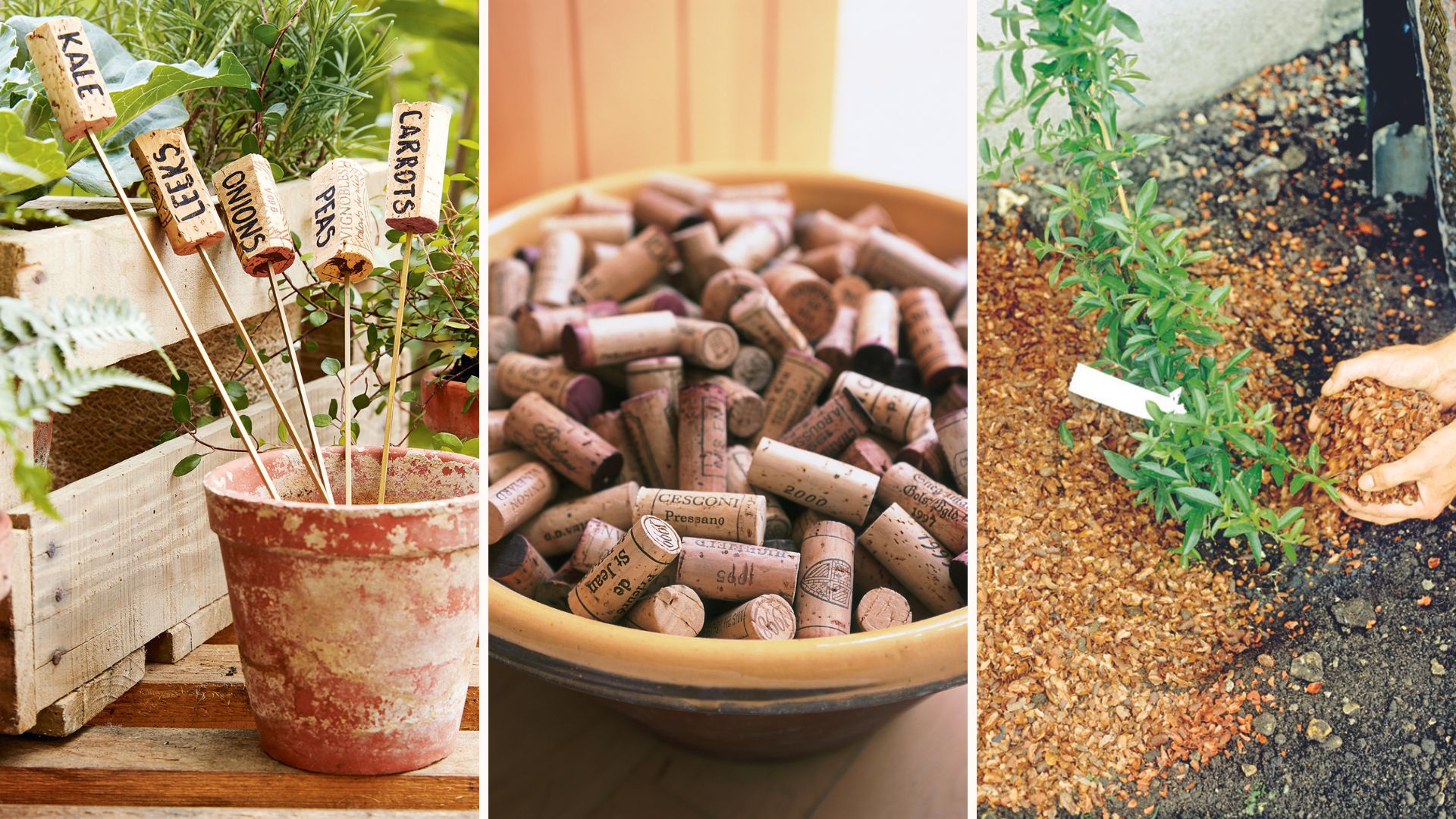
After enjoying a bottle of fine wine don't be too quick to discard the cork; it turns out you can use wine corks for good in your garden, according to gardening experts.
Repurposing wine corks is not only a fantastic, sustainable garden idea, reducing household waste, similar to using orange peels in the garden or coffee grounds in your garden, but also great for saving money with simple homemade creations to better your plot.
Horticultural experts reveal how you can make a protective layer of mulch and even improve soil drainage using simple wine stoppers. Here are the savvy ideas sustainable gardeners can embrace to reuse wine corks in their gardens.
How to use wine corks in your garden: 7 ways to improve soil and plants
Explaining how this budget garden idea can help enhance your outdoor space professional gardener Jane Dobbs says: "You can use wine corks for everything from mulch to plant markers.
"Gardening with wine corks is not only eco-friendly but also cost-effective. You'll get healthier plants, better soil quality, and a more aesthetically pleasing garden."

Gardening is Jane's passion, having built and maintained stunning outdoor spaces for over a decade. Managing all the garden projects at Allan's Gardeners is her responsibility as lead gardener. A wide range of horticultural practices come into play in Jane's work, from landscape design to plant and lawn care.
1. Improve pot drainage
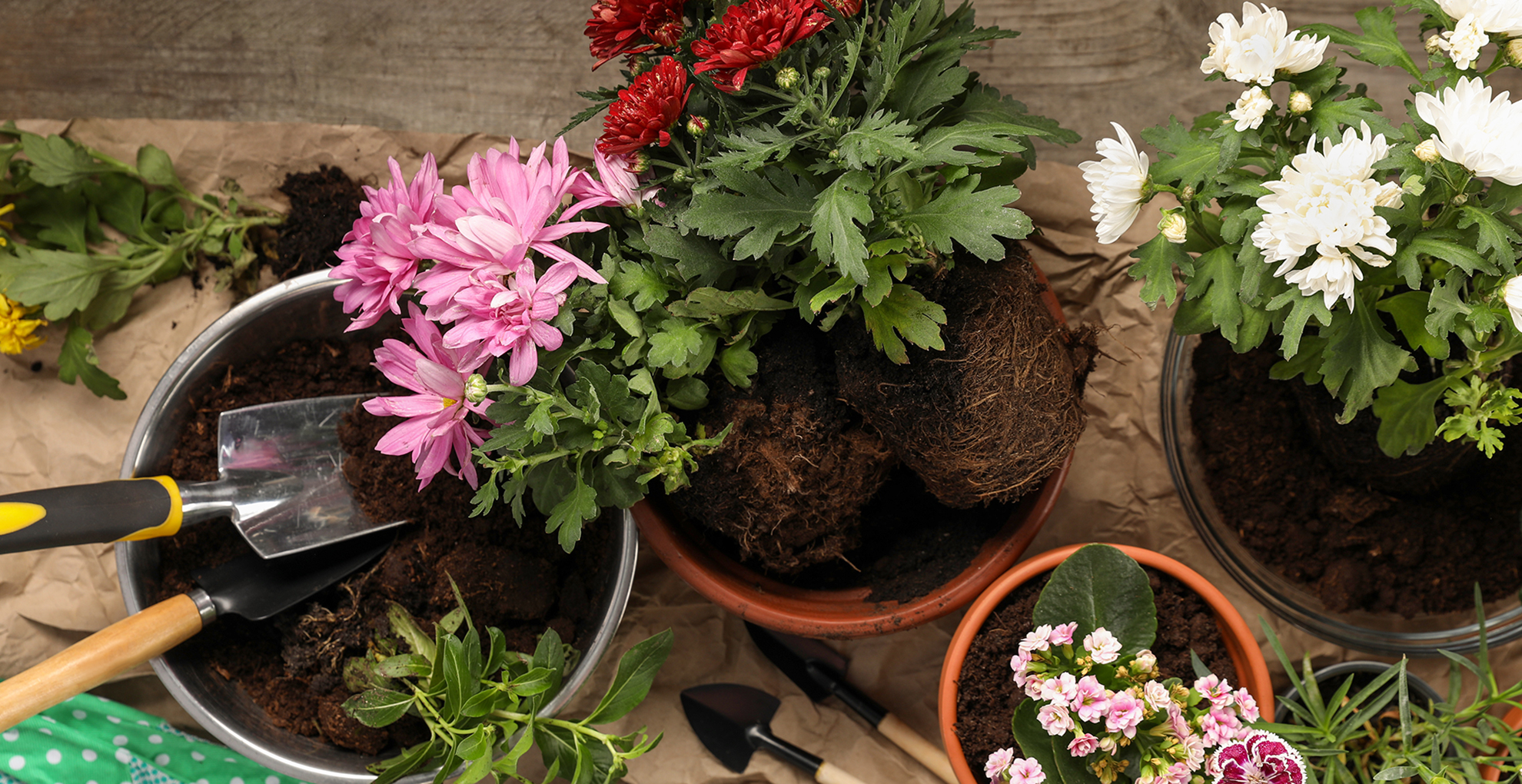
Instead of using the traditional stones to line the bottom of plant pots you can use wine corks
When you're planting your best patio container plants or potting easy-care houseplants corks can be extremely beneficial in aiding drainage.
Placing a few discarded wine corks in the bottom of planters and containers when repotting your plants helps break up the soil to ensure the roots don't become overwhelmed by water.
Sign up to our free daily email for the latest royal and entertainment news, interesting opinion, expert advice on styling and beauty trends, and no-nonsense guides to the health and wellness questions you want answered.
"You can use wine corks to improve drainage in potted plants," says Jane. "Putting cork pieces at the bottom of pots helps prevent waterlogging. Before adding soil, cut the wine corks into smaller chunks and put them in the bottom. Creating a drainage layer will let excess water out."
You don't even need to cut them if you choose not to. When planting new pots you can simply place a handful of wine corks into the bottom to reduce the amount of compost needed and create space.
2. Ease soil aeration
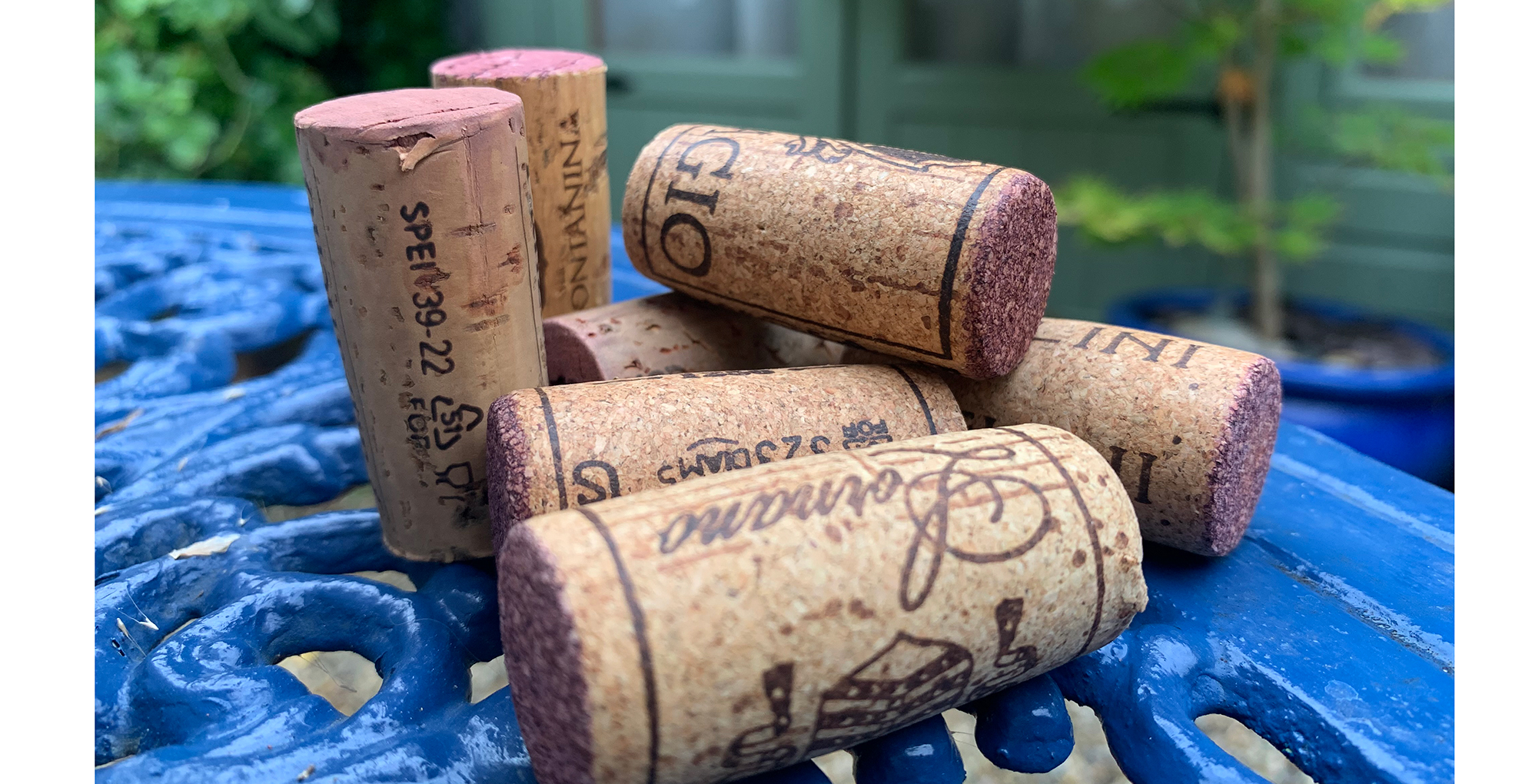
Aeration is beneficial for all aspects of gardening, from helping when making compost to aerating a lawn. "It is crucial for healthy plant growth that the soil is aerated as it facilitates the roots' ability to breathe and assists in the absorption of water and nutrients," Jane explains.
"The air pockets created in the soil by wine corks can assist in this process. By chopping wine corks into small pieces and mixing them into soil, you can help to aerate the soil. It will improve soil aeration and drainage, especially in heavy or compacted soils.
3. Make long-lasting mulch
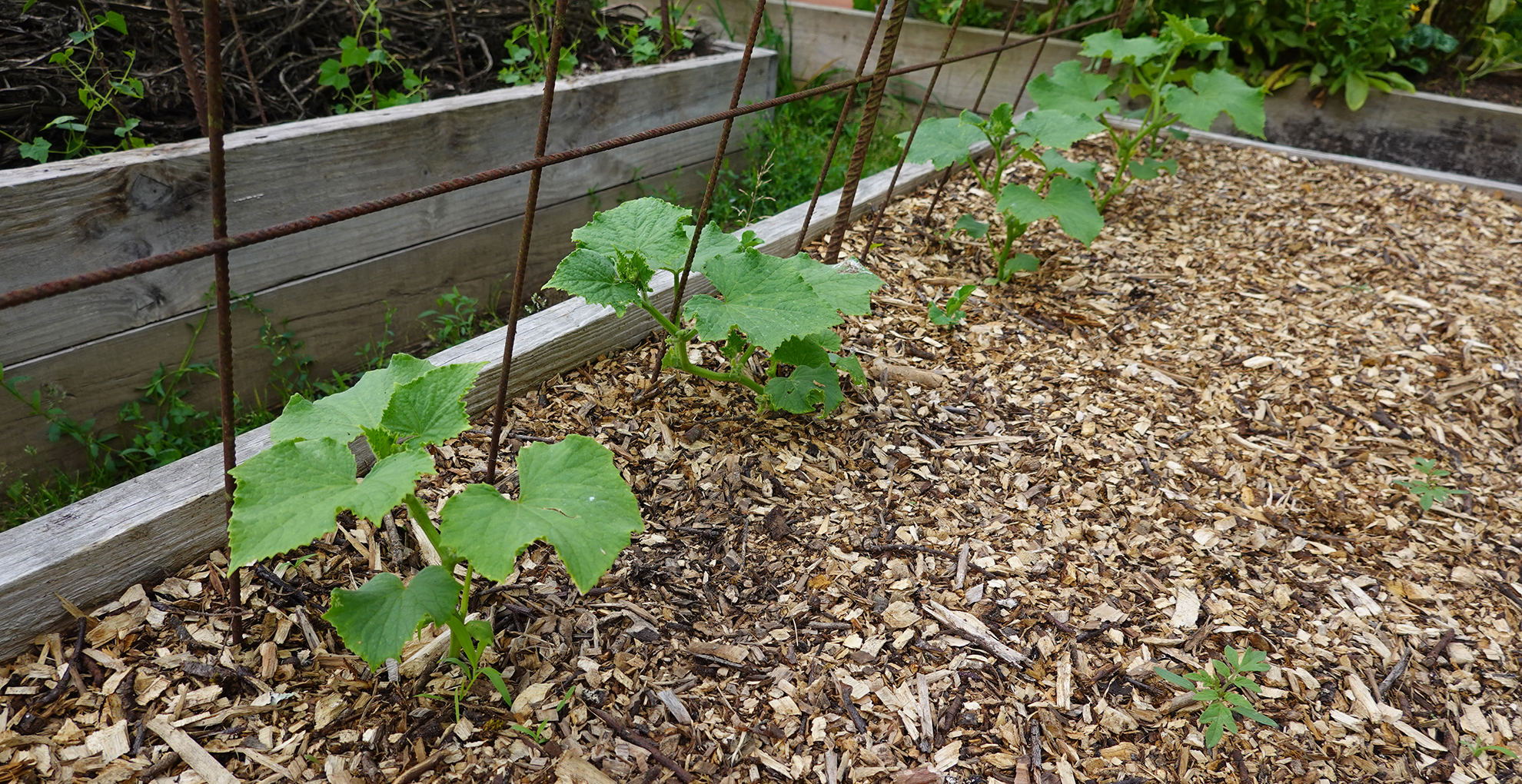
Mulch is a protective layer of material used to cover the topsoil in flowerbeds or composted containers, which helps to protect the area by suppressing weeds, retaining moisture and helping to keep the soil warm in colder climates. You can use wine corks as a slow, biodegradable mulch material.
"You need to clean wine corks thoroughly before you use them as mulch," suggests Jane. "Next, chop them into small pieces using a knife or shears and evenly spread the cork pieces over the soil. As the corks break down, they help improve soil health, retain soil moisture, and reduce weed growth."
It's important, when using wine corks as mulch in the garden, to ensure they are natural cork and not synthetic. Using synthetic corks will leach chemicals into the ground, which you do not want.
To use corks as mulch, you can either leave them whole or cut them up into small pieces. Either way, you have an effective mulch for your plants.
4. Elevate pots and containers
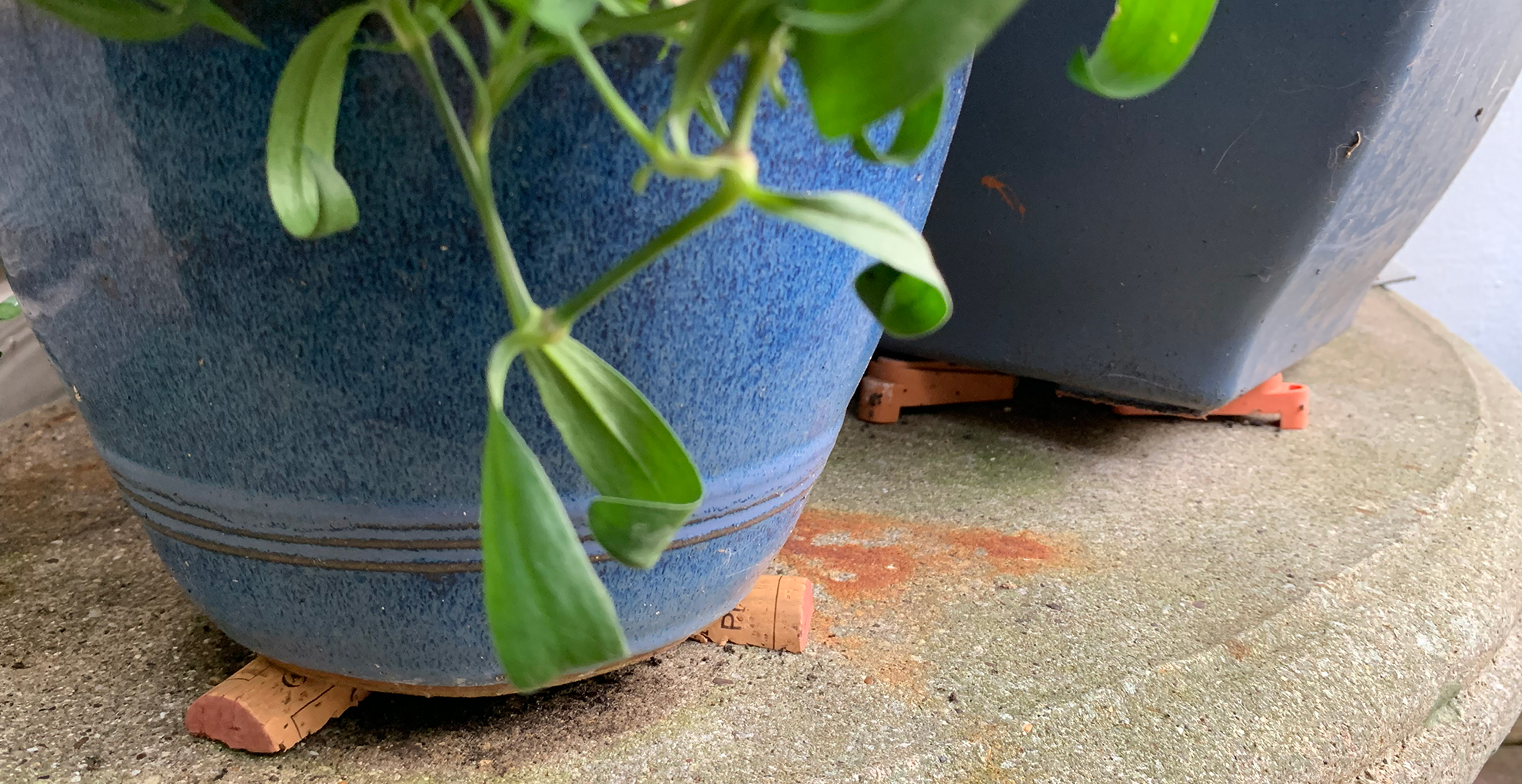
Plant pot feet are a blessing to provide better drainage and prevent root rot. While you can buy a 20-pack of invisible plant pot feet from Amazon for £14.97, you can create your own plant pot feet using old wine corks.
Placing wine cork under pots and planters is a simple but very effective way to raise your them off the ground and improve drainage. There's no need to affix the corks to the pots; just place them flat side down underneath the plant pots, one for each corner, and you have instant, free pot feet.
To use old corks to elevate your plant pots in place of traditional plastic feet, you simply cut the corks in half, safely using a kitchen knife and chopping board. Each cork will create two feet and you use them flat side down and position your pot squarely on top of the homemade feet.
Although the corks are rounded the weight of the pot and the balance of where you equally position the feet will provide a safe and stable base.
5. Create plant labels
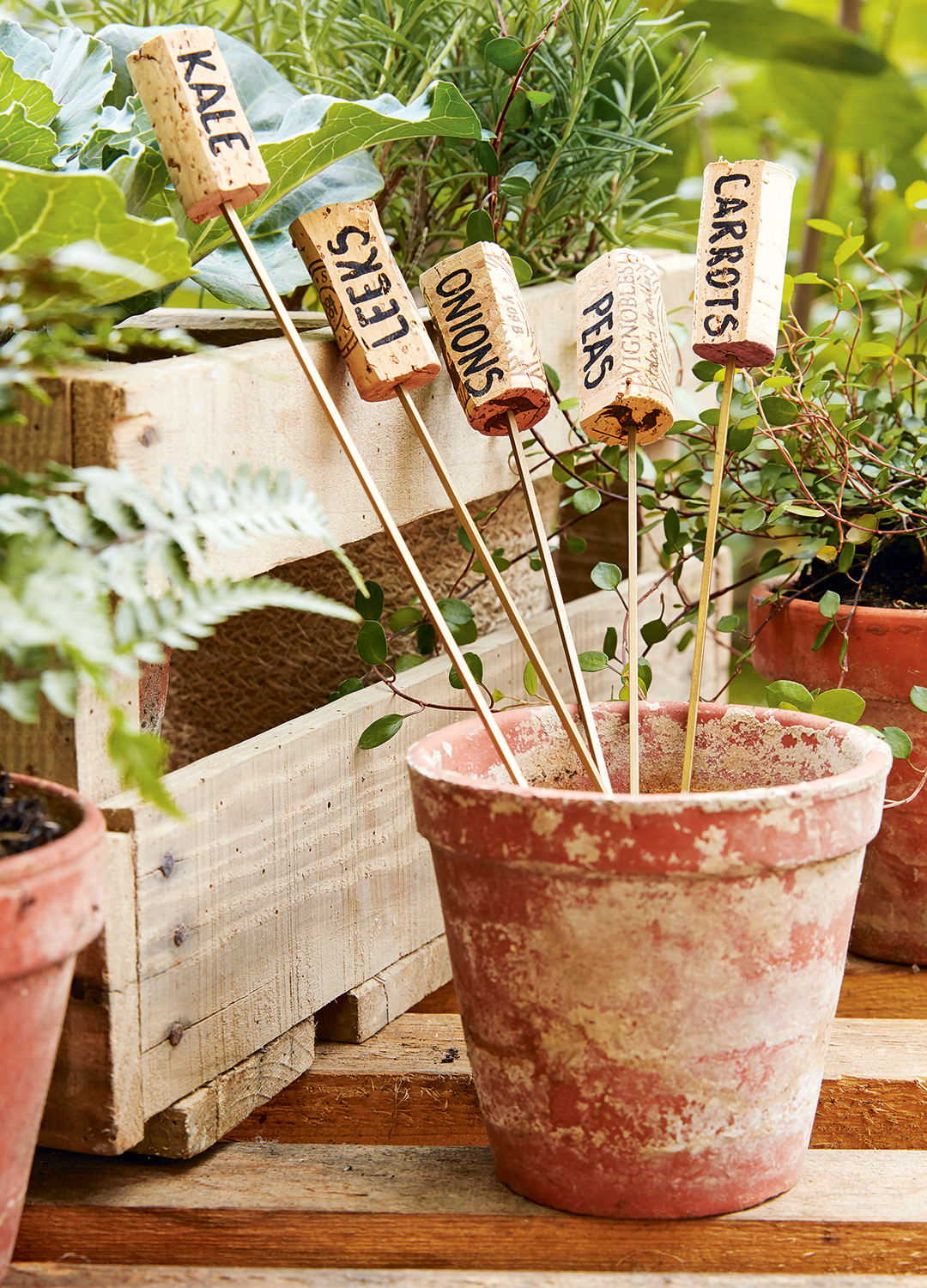
Use your leftover wine corks to fashion homemade plant labels. These can prove invaluable if you are keen on vegetable gardening because when you've gone to all the trouble of growing your own veg the last thing you want to do is lose track of what you've sown where.
To make these simple labels all you need is a sharp kitchen knife, a handful of wooden stakes (like these Chef Aid Bamboo Skewers for £2.99 for 100 at Amazon) and a marker pen.
Take a used cork and carefully cut down one side to make a flat surface, you can do this carefully using your kitchen knife supported by a wooden chopping board. Use a marker pen to then write the vegetable/plant names on the flat side of the cork. Pierce the bottom of the cork label with a wooden skewer and voilà – affordable wine cork labels in seconds.
"Paint the corks a different colour or add artistic designs for a more decorative touch," Jane suggests. "Plant labels can also be made using different types of markers or stickers."
6. Implement a savvy safety measure
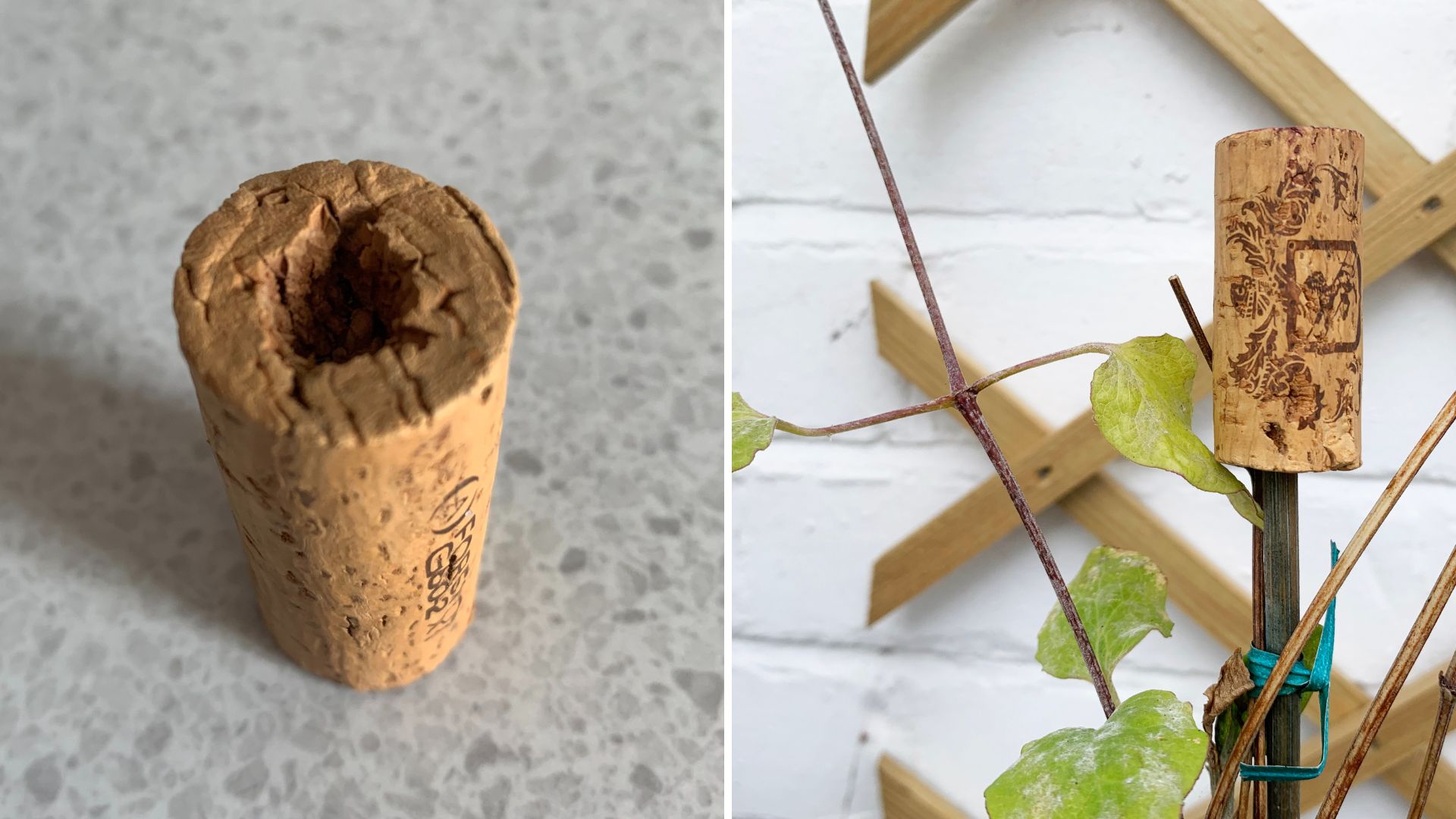
Who knew that old wine corks could be a garden safety measure? Jeremy Shacklock, a gardening enthusiast, and father to w&h's royal editor Emma Shacklock, shares his genius idea to reuse wine corks for added safety when tending to his garden crops.
Explaining exactly how Jeremy says: “I use old wine corks in my garden as a safety precaution when I’m creating support structures out of bamboo canes for my bean plants and sweet peas." A great gardening tip for those training the best climbing plants on canes.
Jeremy explains: "I carefully make a small hole in the top of each cork and then slot them on top of the bamboo canes and they offer a bit of protection and ensure no sharp edges are in the way when I’m gardening.”
Jeremy's idea is a savvy alternative for saving costs, in place of buying Amazon's Choice of Cane Caps Green Rubber Garden Bamboo Cane Topper Protectors for £8.59 for 30.
7. Deter pests
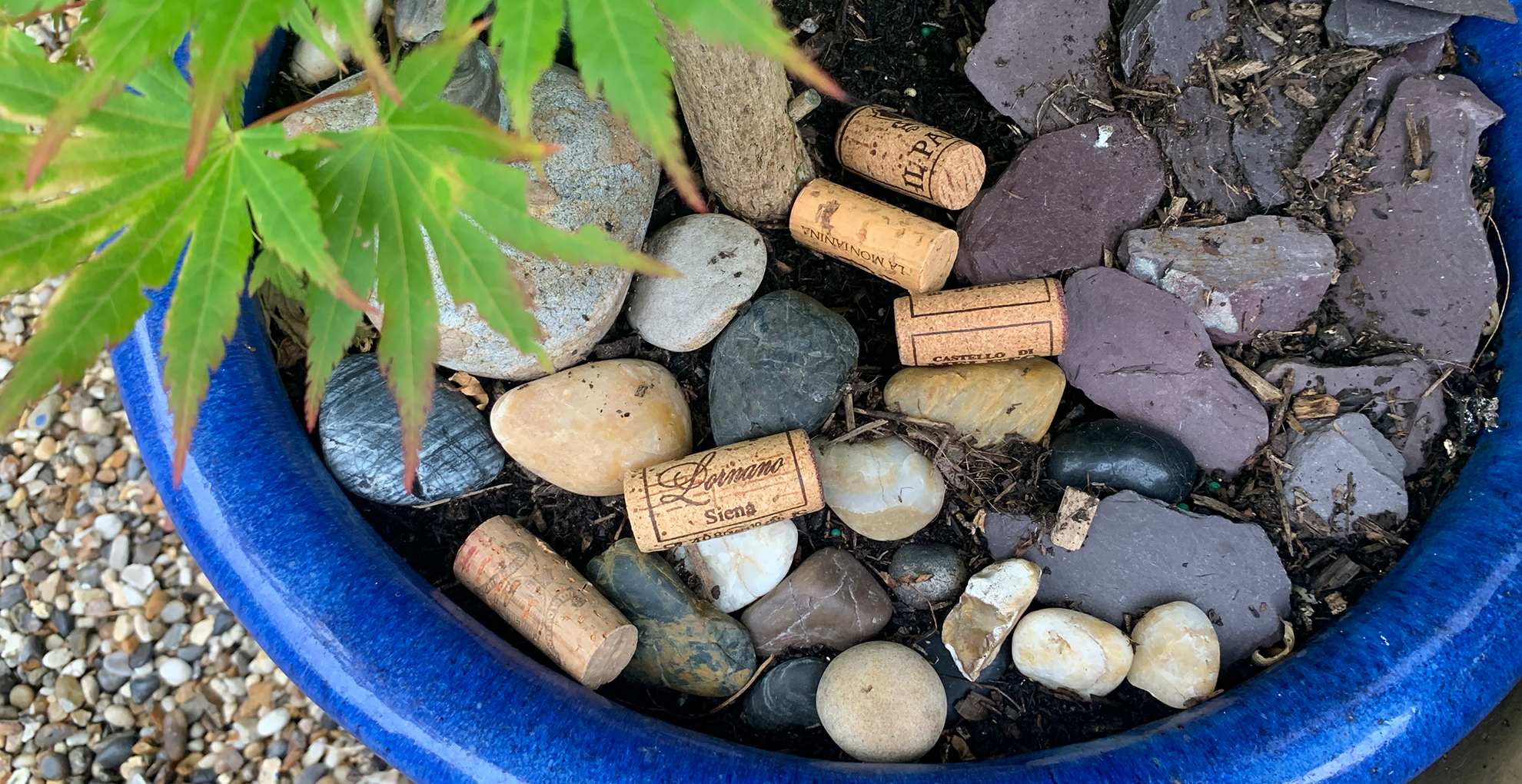
You can choose to use wine corks as a pest deterrent. Whether deterring your neighbour's cat from using your pots as a lavatory or implementing a natural slug deterrent corks can be used on top of your soil to stop pests from getting to your plants.
In my parent's garden, the wine corks are used in their entirety to prevent cats mostly, but if you wish to deter smaller pests you can cut the corks into pieces to create an even terrain that is more challenging for them to navigate.
"Corks are great for deterring certain pests from getting to your plants," says Jane. "Some garden invaders won't like their texture and smell. To keep slugs and snails away, scatter cork pieces around the base of plants. Your plants are safer because they're less likely to cross this barrier."
FAQs
Is cork good for the garden?
Yes, cork is good for the garden, similar to how tea bags are good for your garden or using banana peels. Natural cork can be used in lots of ways in the garden, not synthetic ones. Natural cork makes excellent mulch for your plants and can be put on the compost heap as brown waste for added carbon. If you have a lot of wine corks (no judgment) you could also use them to suppress weeds in your flower beds or vegetable patch.
In addition to assisting with garden jobs, you can also get more creative with your old wine corks, as Jane explains: "There are also lots of ways to turn wine corks into garden decorations, adding a unique touch to your garden. You can make cork garlands, wind chimes, or even little sculptures to put in your garden. Crafts like these can be fun and creative.
"Another creative way to use them is to make bird feeders," she suggests, as a way of attracting birds to your garden. "Bird feeders can be made in all sorts of shapes and hung from trees."
You can also attract birds to your garden using wine corks. "Bird shelters made of wine corks are perfect because of their natural texture and insulation properties," explains Jane.
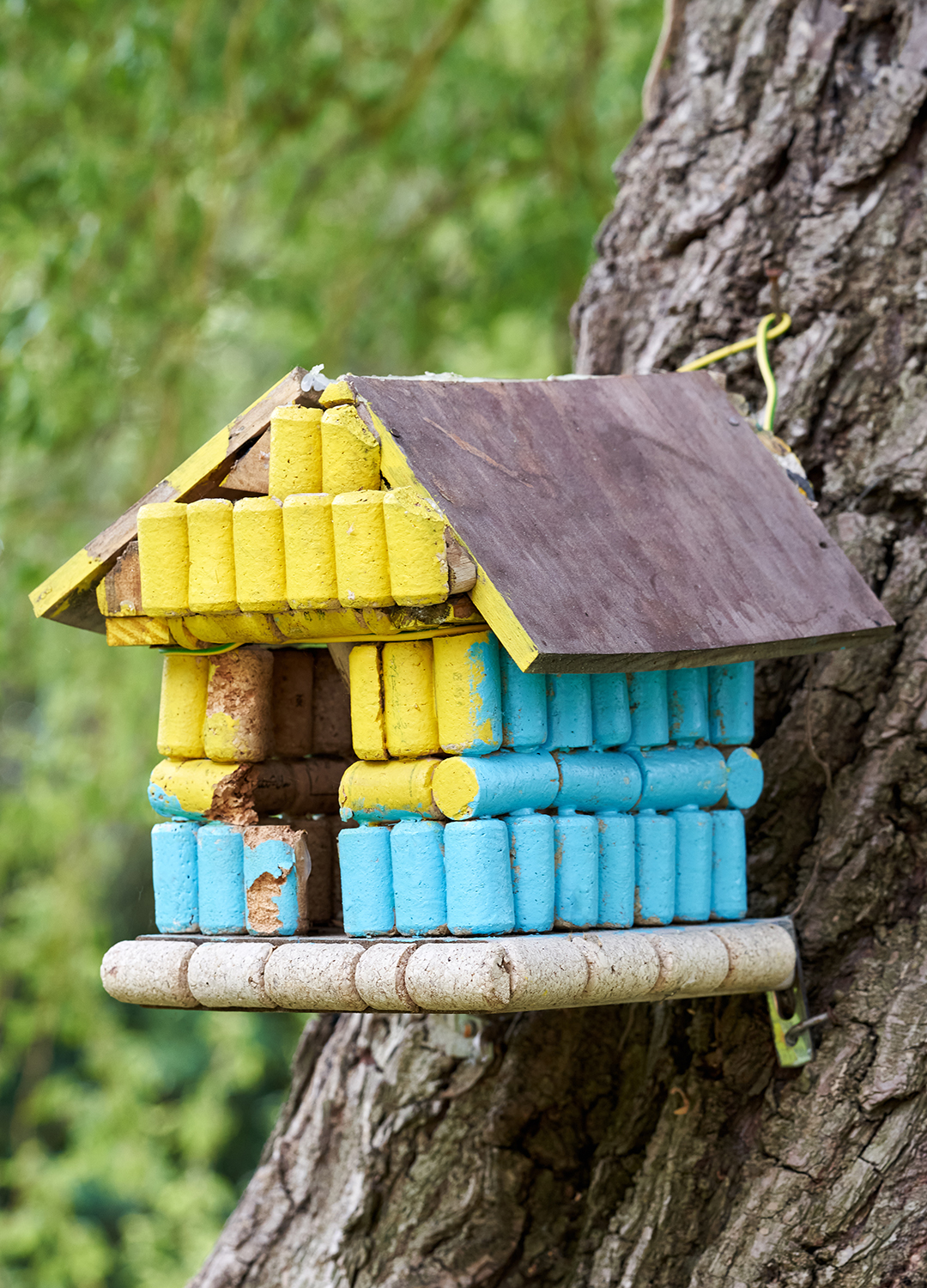
It’s amazing what you can do with some wine corks and a glue gun. You can build a pretty birdhouse for your garden and give your feathered friends a chic home. Simply glue the corks together to make the floor, walls and roof, remembering to leave an opening in the front as an entrance.
This is by no means a way to encourage you to drink more wine (but no judgment here, especially if you're part of our womanandhome.com wine club), it's merely a way of making household waste go to good use. Often, the smallest of acts, from harvesting rainwater or planting the best plants for pollinators, can go a long way to be more eco-friendly in our own backyards.

Tamara is a highly experienced homes and interiors journalist with a career spanning over 22 years. Now the Lifestyle Editor of womanandhome.com, she previously spent 18 years working with the style teams at Country Homes & Interiors and Ideal Home. With these award-winning interior teams, she gained a wealth of knowledge and honed her skills and passion for styling and writing about every aspect of lifestyle and interiors.
A true homes and interiors expert, Tamara has been an ambassador for leading interior brands on multiple occasions, including appearing on Matalan’s The Show and presenting at top interior trend forecasting events such as the Autumn Fair and Spring Fair.